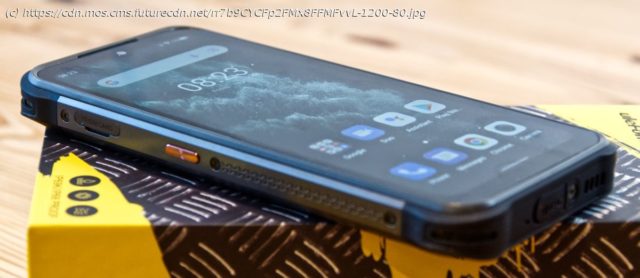The latest Power Armor phone from UleFone delivers a hefty specification.
UleFone is a rugged phone maker that has consistently delivered affordable and feature-packed designs since they were founded in 2006 in Shen Zhen, China. While it makes phones for almost every pocket, the most successful designs UleFone produces are from its ubiquitous Power series. These combine a high degree of ruggedization with large battery capacity, making them ideal for wilderness adventures or outdoor occupations. Today we’ll be looking at the latest Power series hardware, the UleFone Power Armor 14 Pro, and wondering if there are practical limits to how big and heavy a phone can realistically get and still be practical? The Power Armor 14 Pro costs just $259.99 from UleFone (plus shipping), making it only $40 more than the lower-spec Power Armor 14 design. In addition to the phone on its own, UleFone also sells it with a special protective case that has a belt clip and carabiner to help protect the phone. The phone and protective case costs $284.98 when bought together. What’s heartening about rugged phone designs is that those designing them are finally getting away from making them look like props from a science fiction TV show. While undeniably chunky, the Power Armor 14 Pro wears its robust construction well, and in places, it even borders on elegance. That said, it is a monumental phone with an enormous 6.52″ IPS TFT screen that weighs an impressive 357g, excluding the additional protective case. That’s another 60g more than the Jesy J20 and Doogee V20 and only exceeded by a few grams by the Blackview BV8800. With so much mass in the phone and a relatively smooth back with a recessed camera cluster, this is a design that needs to be in a zipped pocket to avoid being unintentionally launched. What’s good about the Power Armor 14 Pro is that it uses an uncomplicated arrangement of buttons and ports that most users will immediately relate. On the right side are a volume rocker and a dual function thumbprint reader and power button, making for a very natural unlock using the right hand. Conversely, the left has access to the SIM card tray and a user-programmable button that is good for snapping images or activating the flash for illumination or whatever you need to do regularly. The lower edge has a centrally mounted USB-C port for charging and data transfers covered in a rubber plug to maintain waterproofing. Another rubber plug is on the top edge covering a 3.5mm audio jack, something that seems an increasingly rare feature on modern Android designs. The biggest issue here is undoubtedly the scale of the phone, as it won’t easily fit in trousers or shirt pockets. Given the rugged nature of the design, it looked like a good candidate for drone flying use. But, it’s way too thick to fit in the standard DJI controller, and a tablet adapter is the only means to mount it securely. Overall, many users will think that whatever the technology in it doesn’t justify having to drag this unwieldy lump around with them.






